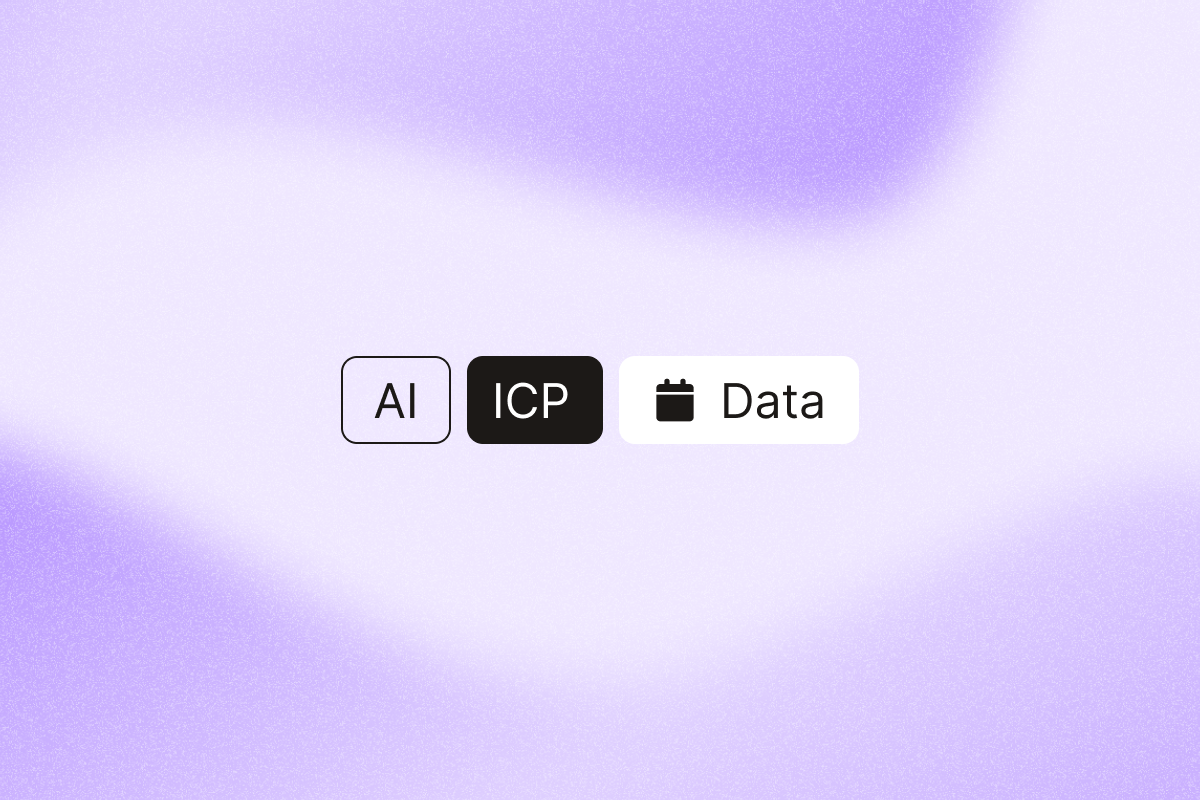What is an ideal customer profile?
An ideal customer profile shows the type of company you want to sell to. It’s your perfect customer, the company that will want to buy from you repeatedly.
You can create a fictitious “profile” of this company with all the criteria that make it your dream client. These could include:
- Industry: The niche that the company works in
- Geography: Where the company is located, and the language they work in
- Budget: How much the company is willing to spend
- Company size: The number of employees
- Problem: Whether your service can sustainably meet their need
When a prospect ticks these boxes, magical things happen. You can nurture a relationship with them, confident that your product will resonate.
Ideal customer profile vs. buyer persona
An ideal customer profile is about the companies you want to sell to, while a buyer persona explores the individual needs of the person you’re targeting and is often more psychological.
In other words,
- Ideal customer profiles = companies
- Buyer personas = people
ICPs and buyer personas are interconnected. For example, if you’re selling a service to a large corporate organization, then they might look like this:
- Ideal customer profile: Legal organization based in New York with more than 3000 employees and a budget of $7000
- Buyer persona: Head of Operations, wants to cut costs and invest in a more time-efficient solution, with straightforward implementation to avoid any downtime
Each perspective is important; ideally, you should make the most of both.
To get started, we recommend focusing on your ideal customer profiles (which we’ll explain in the rest of this ebook) and then developing buyer personas later.
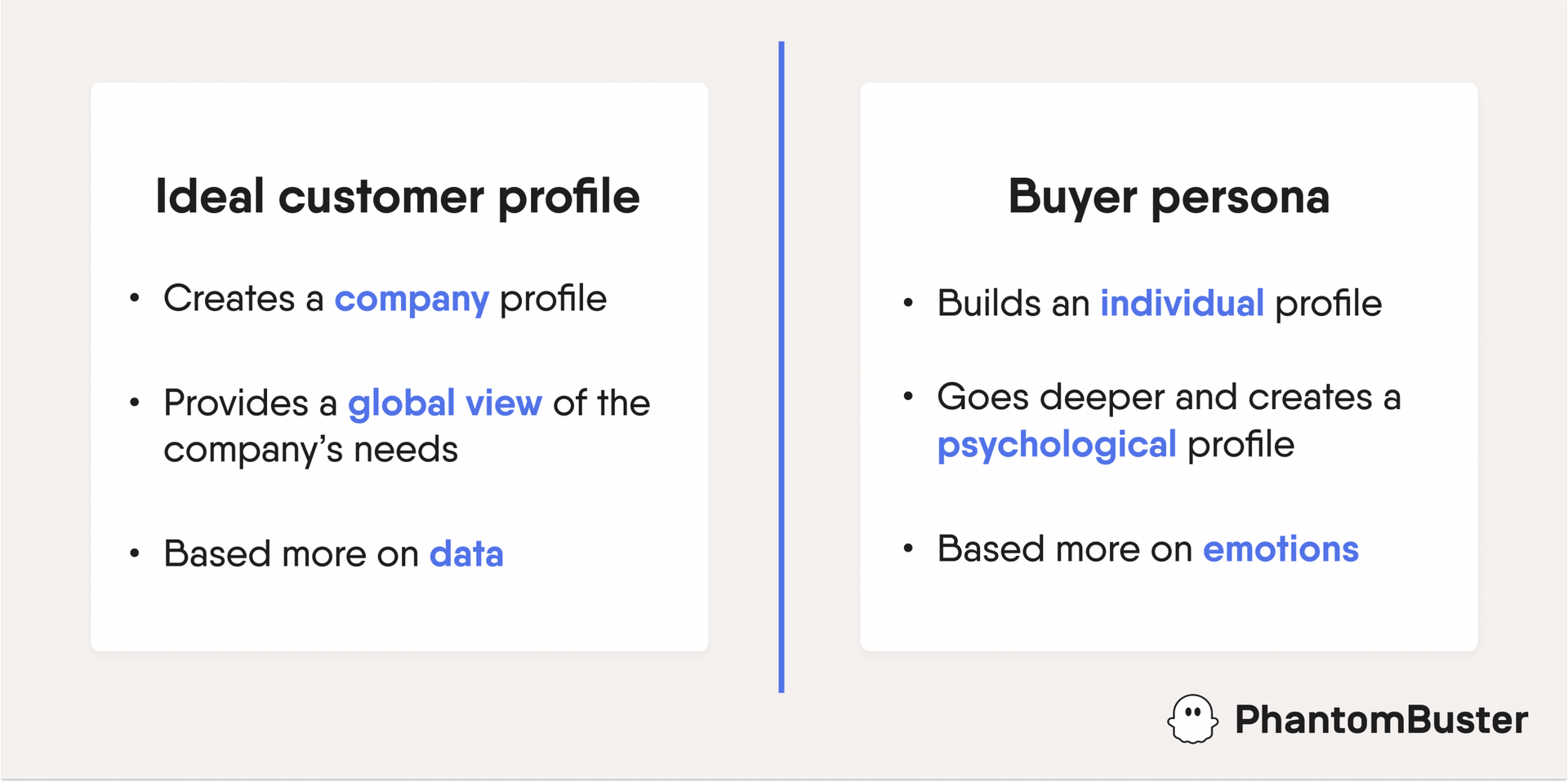
In the next section, we’ll talk about why creating an ICP is so important.
Why create an ideal customer profile?
Creating fictional company profiles might sound like a waste of time, at first. Why bother when you could just focus on selling your product?
But if you take the time to define your ICP, you will
1. Know your leads better
Imagine if we asked you to buy a birthday present for a stranger. You’d have no idea what they liked, nor could you add any personal touches to make the gift more meaningful. And the stranger probably wouldn’t love it.
It’s the same in sales and marketing. If you don’t know your clients, then how can you make their day? It’s more likely that you’ll end up with wasted time and unclosed deals.
When you know your best audience, you can plan your marketing, upcoming products, and other objective decisions, confident that they will resonate.

2. Engage with more companies
Once you understand your ICP, a whole new world opens up. Because the moment that you need more clients, then you know exactly where to start digging, and you can use automated lead generation tools to get you there.
For example:
- Looking for a small business? Use a Google Maps automation to find local companies
- Need to contact photography companies? Head over and auto-follow them on Instagram
- Want to connect with think tanks? Retweet them automatically to get their attention
The moment you know who your best customers are, you can dive in and engage with them. Plus, your marketing campaigns will be tailored to their interests, making them more effective and appealing to even more clients.

3. Enjoy boosted profits
With more customers coming your way, you can expect to see your revenue jump up accordingly. It’s a natural result of tailoring your campaigns to the right audience.
Although establishing your ICP might take some time, the long-term benefits make it well worth the effort.

In the next section, we’ll help you to create your ideal customer profile from A to Z.
How to create an ideal customer profile
There are three main steps to discovering your dream customer. But remember that it might need some fine-tuning along the way.
Step 1: Highlight the problem your business solves
To build your ICP, you need to first think about how your business helps people. Once you understand the issues they have in common, then you can start profiling your top customers.
For example, let’s pretend that you run a digital nomad travel agency. What pain points does your business solve? Already, you can be sure that your customers are desperate to find work-friendly accommodation, a straightforward visa process, and an Instagram-able location.
If you can solve all those issues, you’ll attract many happy customers.
Questions to ask yourself:
– What are my audience’s pain points?
– What do companies gain from working with me? How do I help them?
– What goals do they have in common?
Step 2: Crunch some numbers
Now, it’s time to find “la crème de la crème”. Look for the top companies that absolutely love your business and would even recommend it to their own networks.
Here’s a list of data that can help you to find your best customers:
- Location
- Customer feedback
- Company budget
- Bestselling products/ services
- Customer loyalty
- Customer Lifetime Value
- Site content engagement
- Demographics
Let’s break each of these down.
ICP metric #1: Location
If you know where most of your customers are coming from, you can then tailor your lead generation campaigns accordingly.
You might wonder why customer location is so important. Here’s a quick story from IKEA to explain. When IKEA opened its first US store in 1985 with a collection of European products, it was surprised to see its flower vases selling at an astonishing rate.
Why were all these vases flying off the shelves?
After some extensive market research, IKEA discovered that their American customers had assumed that the vases were actually drinking glasses.
This was due to cultural differences in portion size, and IKEA quickly adapted its products to allow for this.
The same principle applies to building your ideal customer profile. If you know where they come from, then you can ensure that your product or service will fit the local language and culture.
Otherwise, just like IKEA, you might find that your vases are being sold as drinking cups!
How do I find where my customers are based?
On Google Analytics, you can visit “Audience”, then select “Geo” and “Location”.
This will create a heatmap that shows you where most of your audience is based. You can also find out which language is most commonly used under this section.
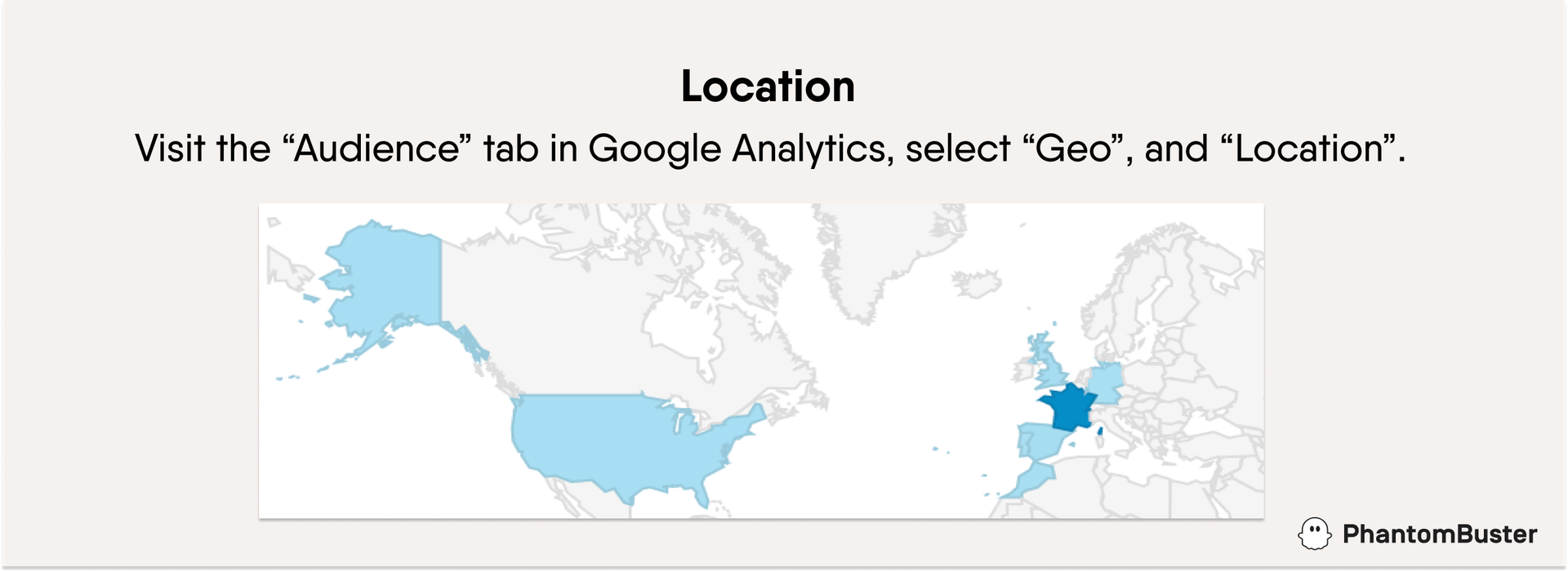
ICP metric #2: Customer feedback
You can also analyze qualitative data. Customer interviews (or feedback of any kind) could give you valuable insights into what your business does best.
If many companies like using your tool for the same reasons, they could all be grouped under an ICP.
Interviews can also help eliminate other categories that don’t fit your ICP. For example, if a certain type of company finds your product less useful, they probably aren’t your target market.
How can I measure customer feedback?
Run some interviews with your customers, and look for common themes in their responses. You can focus your questions on the challenges they wanted to solve when they became a customer, whether you’ve met their expectations, and whether they would recommend your business to others.
Check out the example questions below if you need some inspiration.
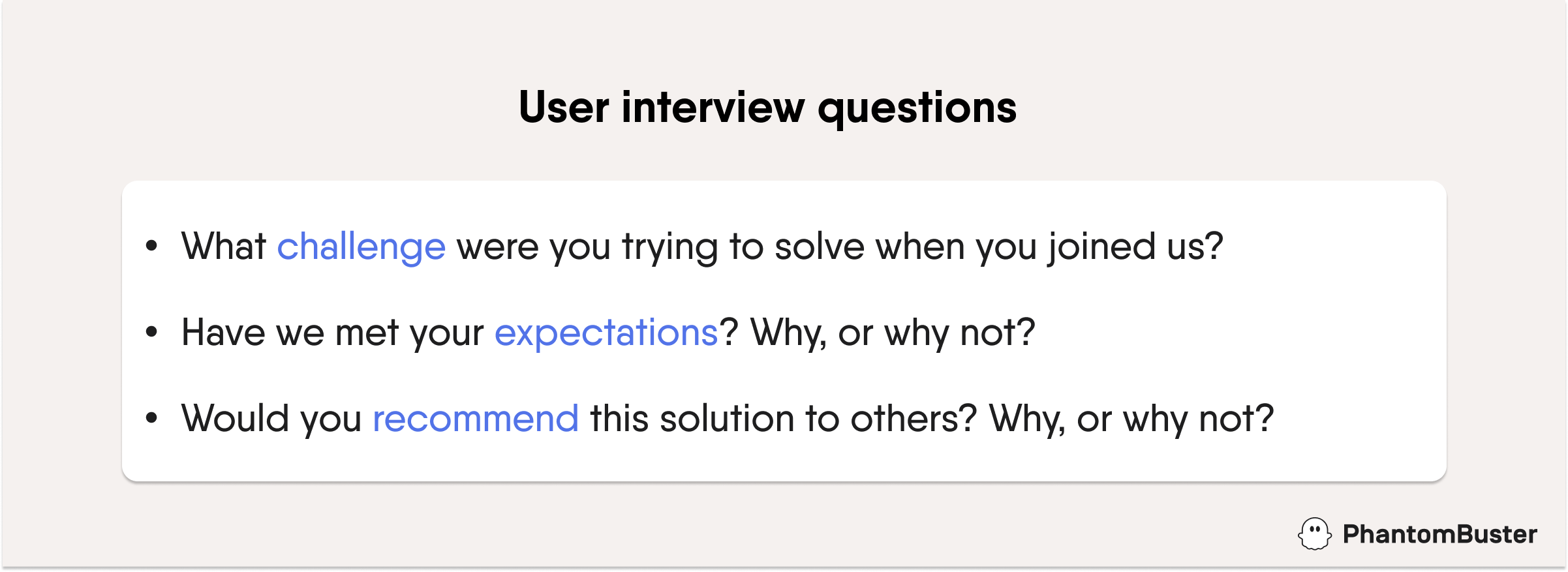
ICP metric #3: Company budget
It’s vital to know how much your prospects are able to spend on your product. There’s no point targeting someone, only to later discover that they cannot actually afford your services.
Identifying a company’s budget will help you to understand whether you can meet their needs, and whether their investment matches your expectations as well.
How can I find out what a company’s budget is?
There are two main ways you can work it out:
- Through customer surveys: Ask people how much people are willing to spend when they sign up, or during introduction calls.
- By calculating the Annual Contract Value (ACV): Take a look at customer buying patterns and find the accounts with the highest yearly contracts.
These two methods could give you an idea of how much companies are willing to spend.
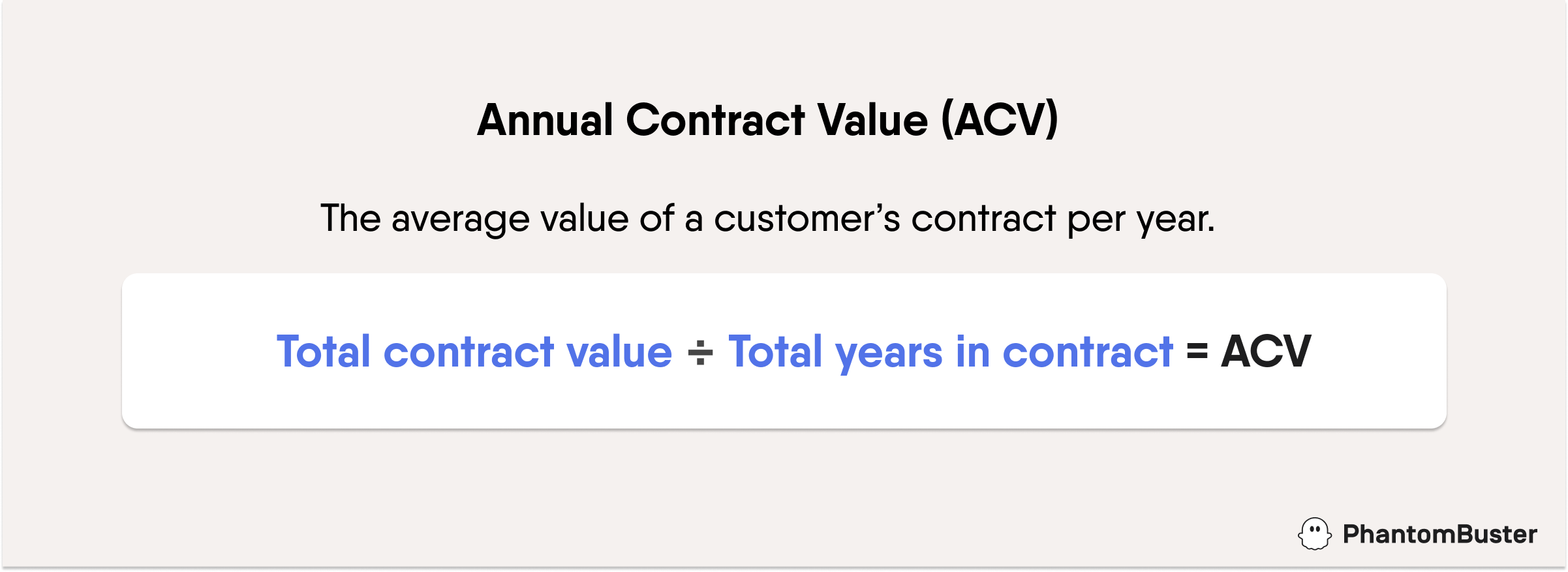
ICP metric #4: Bestselling products or services
Your most popular products and services could also hint at who your target market is.
Imagine if you sell marketing guides for different industries, and your nonprofit guide has the highest sales. This could mean that nonprofit companies are finding your product especially useful, making them a potential ICP.
In the same way, your least-popular products can show you what resonates the least, and eliminate companies that won’t fit your ideal customer profile.
Let’s pretend that you sell a range of sports equipment, and your surfing selection is at record-low sales. You could safely assume that surfing agencies probably don’t match your ICP right now.
How can I find my bestselling products?
In Google Analytics, visit “Conversions”, “Ecommerce”, and then click on “Product Performance.” You’ll then be able to see a summary of your product revenue, unique purchases, average quantity, and more.
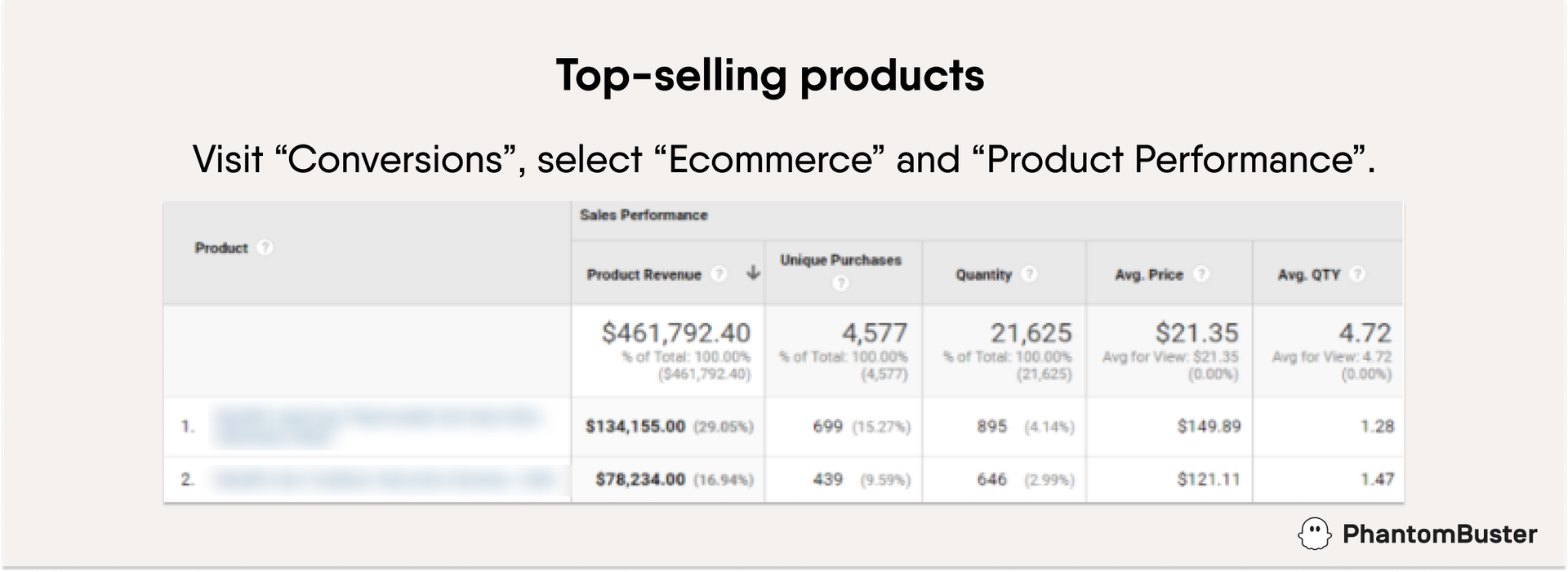
ICP metric #5: Customer loyalty
Loyal clients will bring you one step closer to discovering your ideal customer profile. These are the people who come back again and again, and who love your products so much that they’d recommend them to their network.
When you start to spot common characteristics among your loyal customers, you can start to build a picture of your ideal customer profile.
How can I measure customer loyalty?
A simple Net Promoter Score (NPS) is the easiest way to measure customer loyalty. This is where you ask your audience how likely they are to recommend your service, and they respond with a value between 1 – 10.
Here’s how you grade their responses:
- 9 – 10 = “Promoters” are your top fans, and will promote your brand to others
- 7 – 8 = “Passives” are satisfied, but not overly enthusiastic either
- 0 – 6 = “Detractors” are dissatisfied and could communicate their negative experience
You can identify your top customers as those who fall into the “Promoters” category.
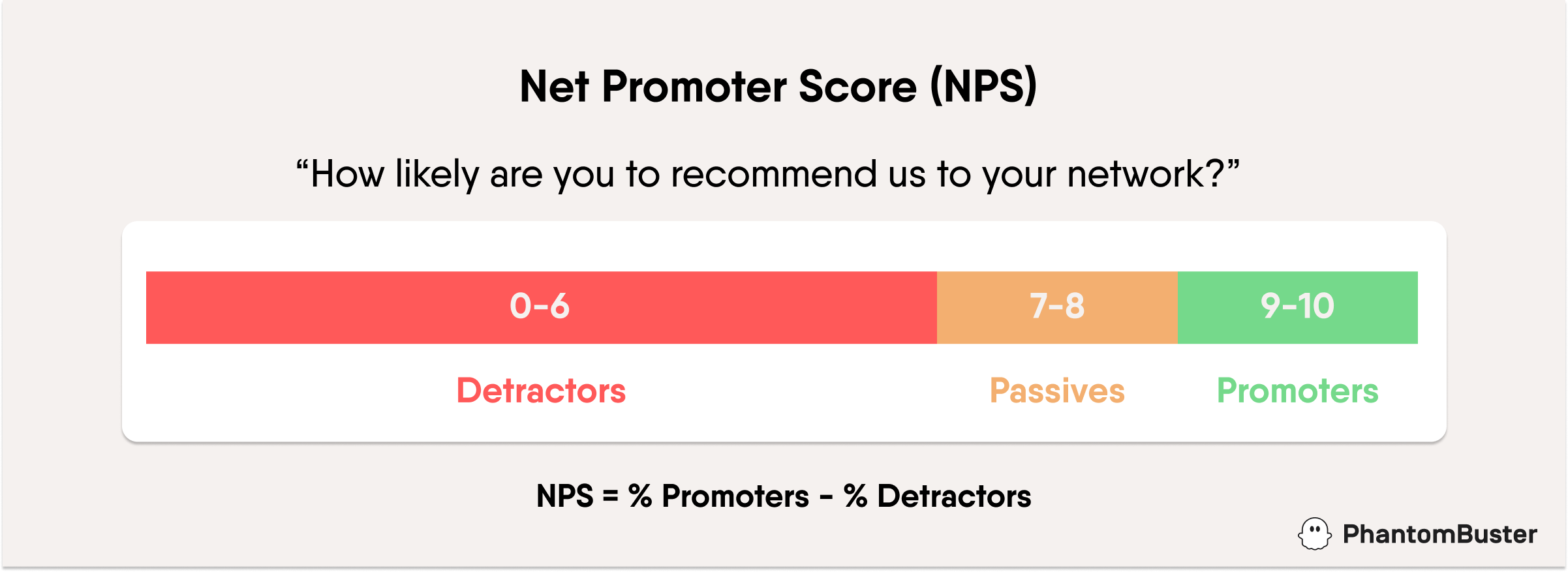
ICP metric #6: Customer Lifetime Value
Calculating the Customer Lifetime Value (CLV) reveals the total revenue you gain from a relationship (this includes future sales). In other words, you can find out who is bringing in the most cash.
This metric is a great way to get closer to your ICPs, as you can identify your number one customers and prioritize them in the future.
How can I measure the CLV?
To calculate the CLV, you can multiply the average order value by the purchase frequency rate, multiplied by the average customer lifetime.
Lots of multiplication, right? But it’s worth it, because you’ll end up with a clear metric to find your best customers.
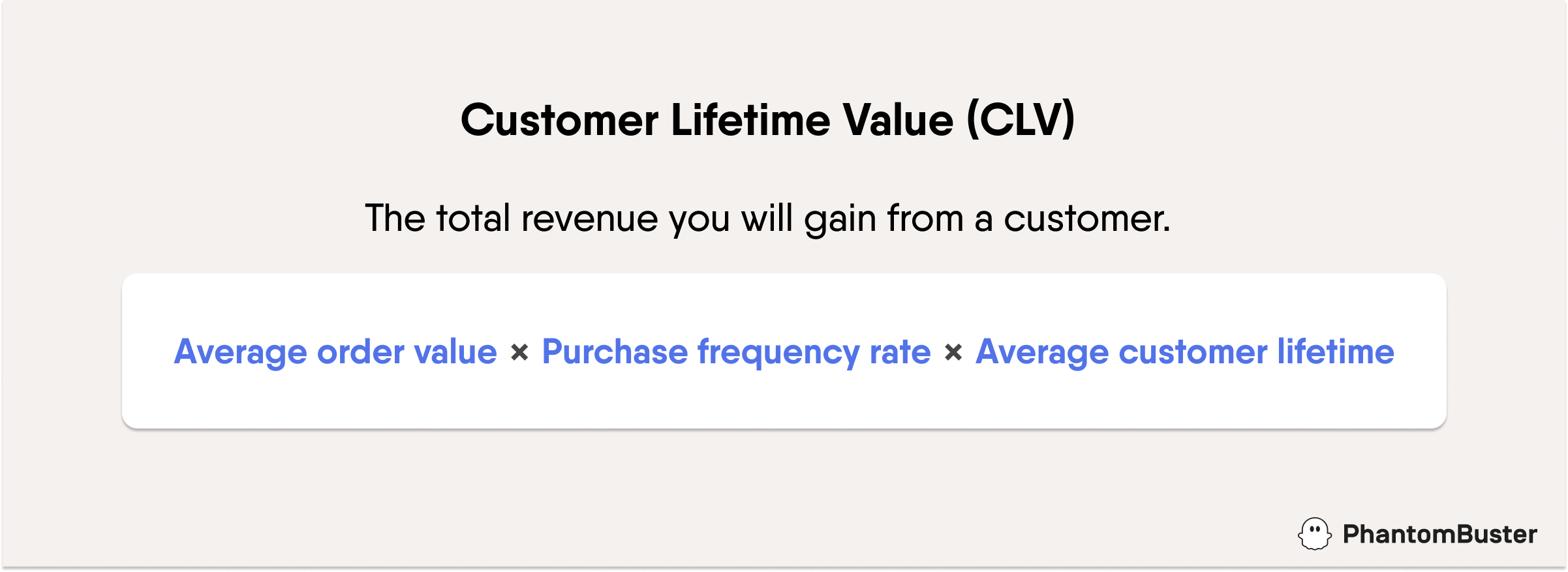
ICP metric #7: Site content engagement
You can do some detective work and find out what content is resonating the most with your page viewers.
For example, let’s say that you’ve written a landing page that targets art galleries. On Google Analytics, you can see that it has the highest number of page views, plus the longest average time on a page.
This could indicate that your content is hitting the mark, and it might be worth reaching out to art galleries as potential ICPs.
How can I measure my site content performance?
To find your top-performing content in Google Analytics, click on “Behavior”, select “Site Content” from the dropdown menu, and click on “All pages”.
You can then judge your top content based on:
- Pageviews: The total number of pages viewed
- Unique Pageviews: Where the specified page was viewed at least once
- Average Time on Page: The average amount of time users spend on the page
- Entrances: The number of times visitors enter your site through the page
- Bounce rate: The percentage of sessions where there was no further interaction with your site
- % Exit: How often users exit the page
- Page Value: The average value of the page
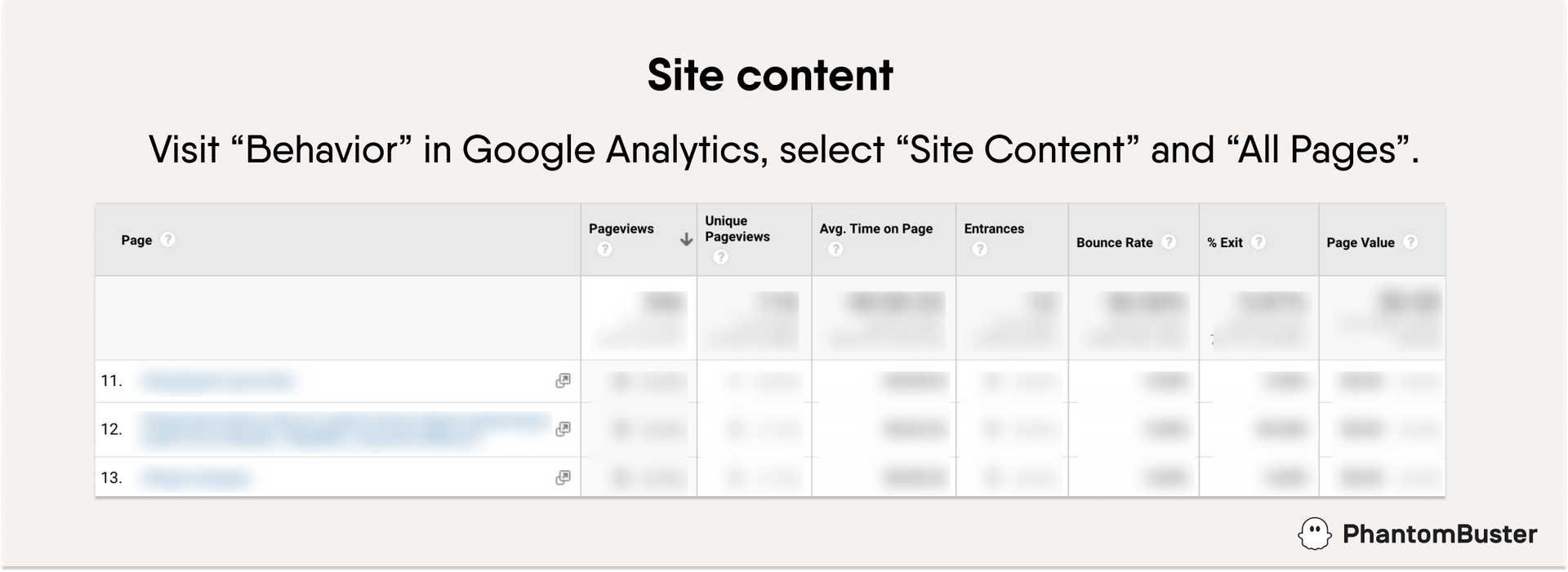
ICP metric #8: Demographics
Whilst this can overlap with buyer personas (they are complementary, after all), it is nonetheless interesting to understand the demographics and attributes of the companies you’re targeting.
For example, an age range of 18 – 34 could orient you towards younger startup teams that are packed with millennials and Gen Z. Gender ratios and interest categories can also be revealing.
How can I discover the demographics of my target audience?
You can access all of this data in Google Analytics via the “Audience” tab, where you can select “Audiences” to see an overview of your audience’s characteristics.
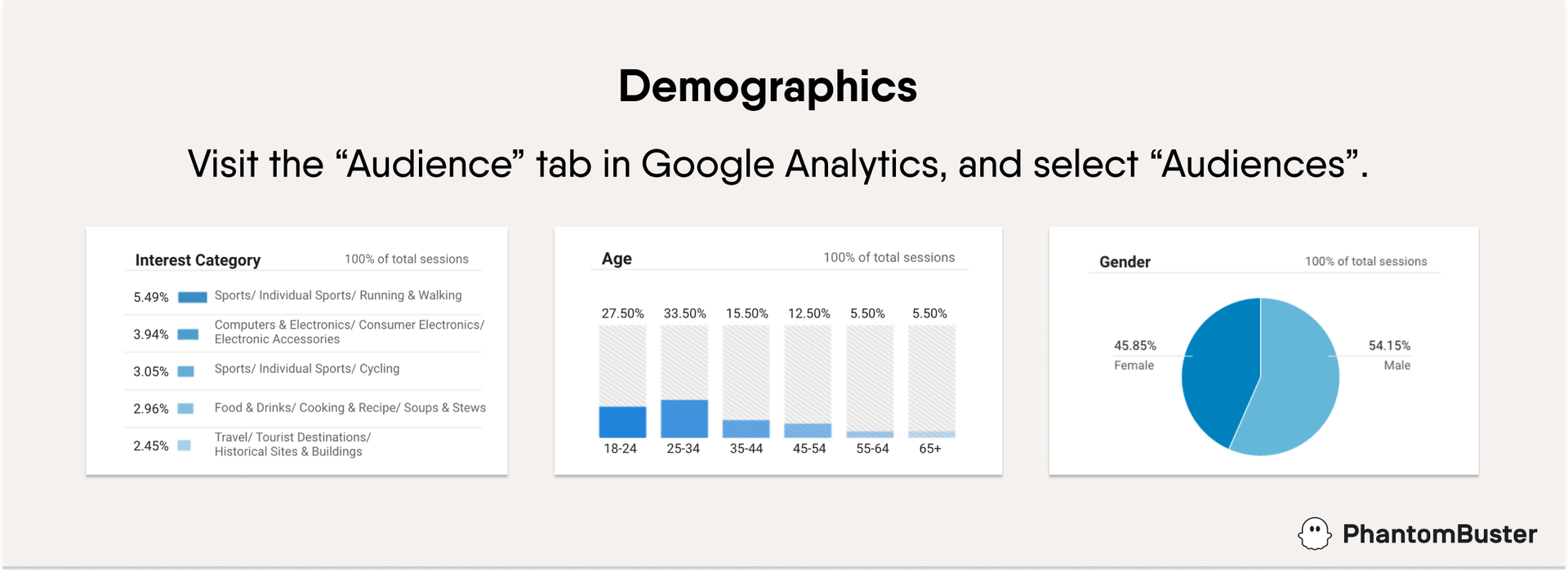
Step 3: Answer the following questions
You’ve done your research and crunched the numbers. Now it’s time to bring it all together and build a picture of your ideal customer profile.
Ask yourself the following questions…
- What challenges does my business solve?
- Where are most of my customers located?
- What themes are coming up in customer feedback?
- What is the highest Annual Contract Value among my customers? Could this indicate my ICP’s budget?
- Which of my products/services are selling the most? What does this say about my customers?
- Who are my most loyal customers (e.g. people scoring as “Promoters” in NPS surveys)?
- Which customers have the highest Customer Lifetime Value? What do they have in common?
- Which pages are performing the best on my website? And how might this reflect my audience?
- What are the demographics of people visiting my website?
When you bring all these answers together, you should have a much clearer picture of who your ideal customer profile could be.
In the next section, we’ll dive into an ideal customer profile template that you can use, plus some examples for inspiration.
Ideal customer profile template
It’s officially time to map out your ICP. There are many different templates and methods to do this, but for now, we’ll show you a basic one to get started.
Here is a simple ICP outline that you could use to define your target market.
Industry: …………………………………………….
Goal: …………………………………………………..
Budget: ……………………………………………..
Size: ……………………………………………………
Location: ……………………………………………
We’ve also made this template for you to copy and paste into your notes (and print if you like).
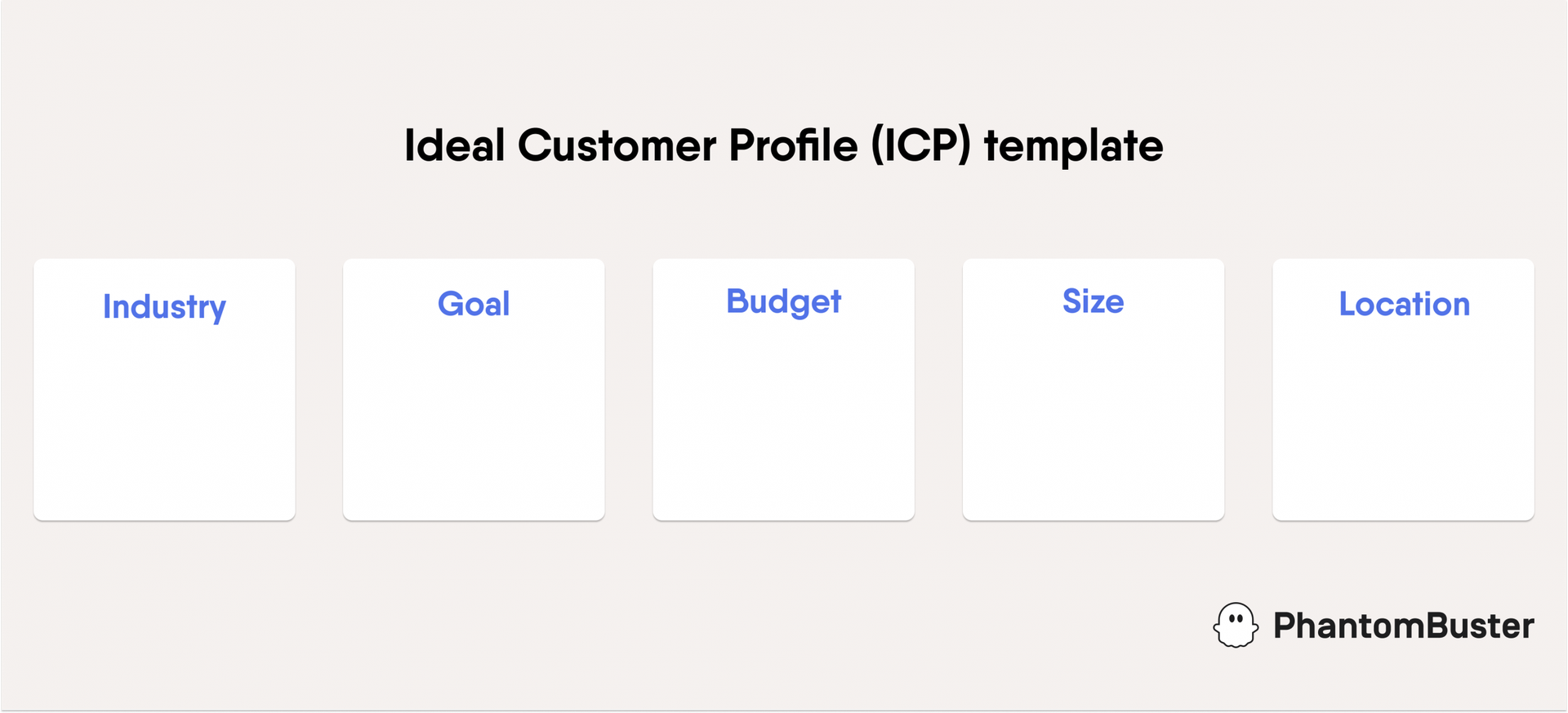
Of course, this is not an exhaustive list. You can also add further details such as the company’s revenue, growth rate, current solutions in place, and anything else that’s relevant to you.
Ideal customer profile examples
Here are some (totally fictional) examples for inspiration.
ICP example #1
– Industry: Fintech
– Goal: To automate their infrastructure
– Budget: $12,000 per year
– Size: <1000 employees
– Location: Malmö, Sweden
ICP example #2
– Industry: Art galleries
– Goal: To sell more works online
– Budget: $5,000 per year
– Size: <10 employees
– Location: Paris, France
ICP example #3
– Industry: Publishers
– Goal: To develop their ad strategy
– Budget: $21,000 per year
– Size: <500 employees
– Location: New York, US
Before we move on, why not take a moment to jot down what your own ICP looks like, so far?
In the next section, we’ll explore some automated lead generation tools from PhantomBuster that can help you to connect with your ICPs on autopilot.
4 tools to automatically connect with your ICP
You’ve done the hardest part. Getting to know your ICP is a journey, but connecting with them is much simpler than you think.
Once you have your ICP, there are lots of lead generation automation tools to build a relationship with them automatically.
Let’s take a look at 4 tools from PhantomBuster which can streamline your workload. Just set it up once, and it will work away in the background, without you having to lift a finger.
What is PhantomBuster?
PhantomBuster offers 100+ lead generation automation tools that anyone can use. It operates via “Phantoms” (individual actions) and “Flows” (sequences of actions).
The setup only takes a few minutes, and then it will work automatically on your behalf, while you focus on more important things. Click here to sign up for a free 14-day trial, no credit card needed.
Without further ado, let’s jump in and explore 4 lead generation automation tools from PhantomBuster that can bring you one step closer to your ICPs.
1. Connect with LinkedIn users directly from a search or a group
Want to connect with your ICPs on LinkedIn? If you upload the URL of a LinkedIn search or a group to this automation, it will send connection requests on your behalf. No more filtering through lists of profiles; in a few clicks, this Flow will take care of that for you.
Try the LinkedIn Search to Lead Connection Flow
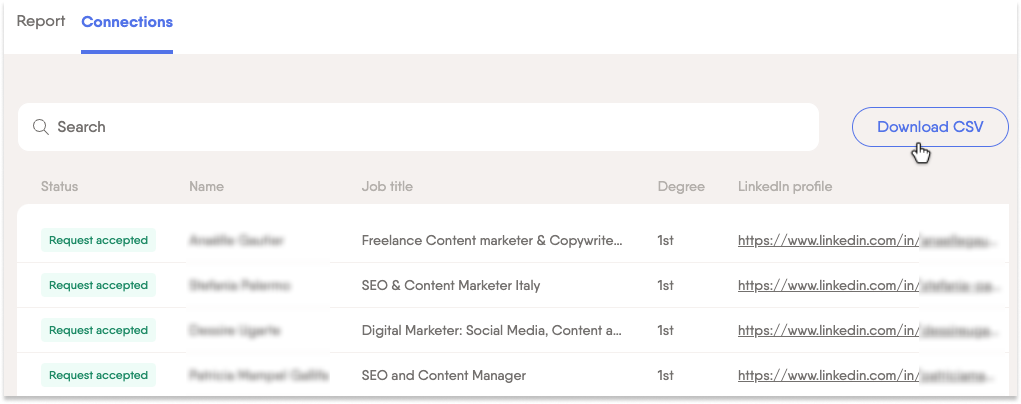
2. Collect email addresses straight from Sales Navigator
If you’re more of the emailing type, you can upload a search URL from Sales Navigator. This Flow from PhantomBuster will automatically gather professional email addresses from this URL. (There is also a LinkedIn version of this automation.)
Try the Sales Navigator Search to Emails Flow
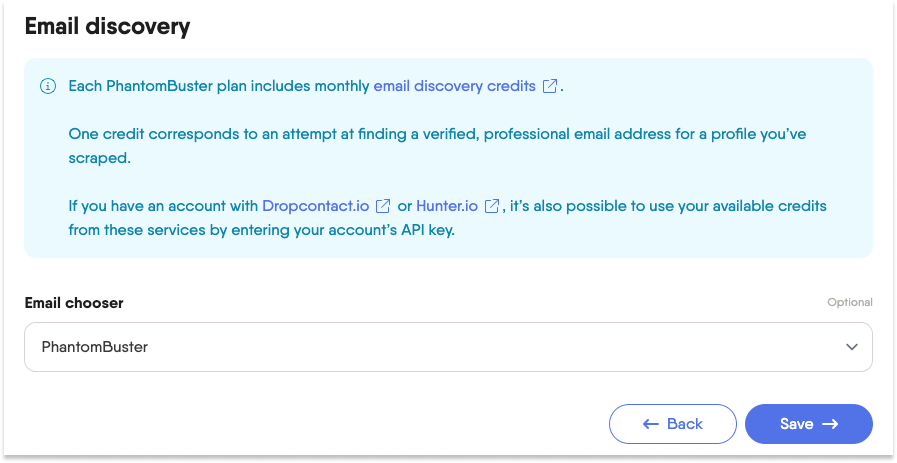
3. Get contact data from Google Maps
Once you know the location of your ICPs, you can search for them on Google Maps. Add the URL to this automation from PhantomBuster, and you can also extract their contact information (including phone numbers and emails) in minutes.
Try the Google Maps Search to Contact Data Flow
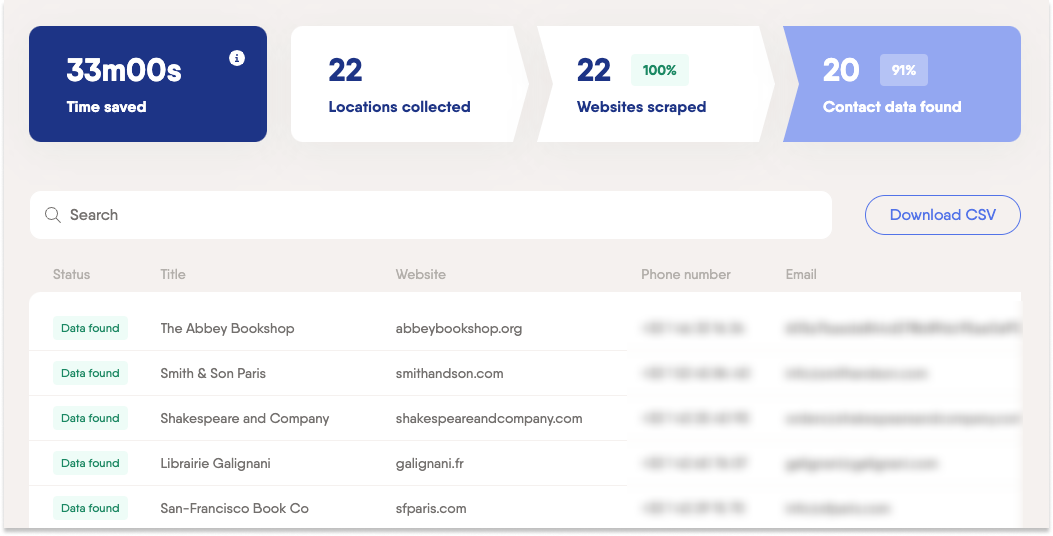
4. Auto like and comment on relevant Instagram posts
If you want to catch your ICPs’ attention on autopilot, select hashtags which are relevant to your niche. Upload them to this automation, along with the comments you would like to post, and let PhantomBuster check and post these for you on a regular basis.
Try the Instagram Hashtag Search to Post Engagement Flow
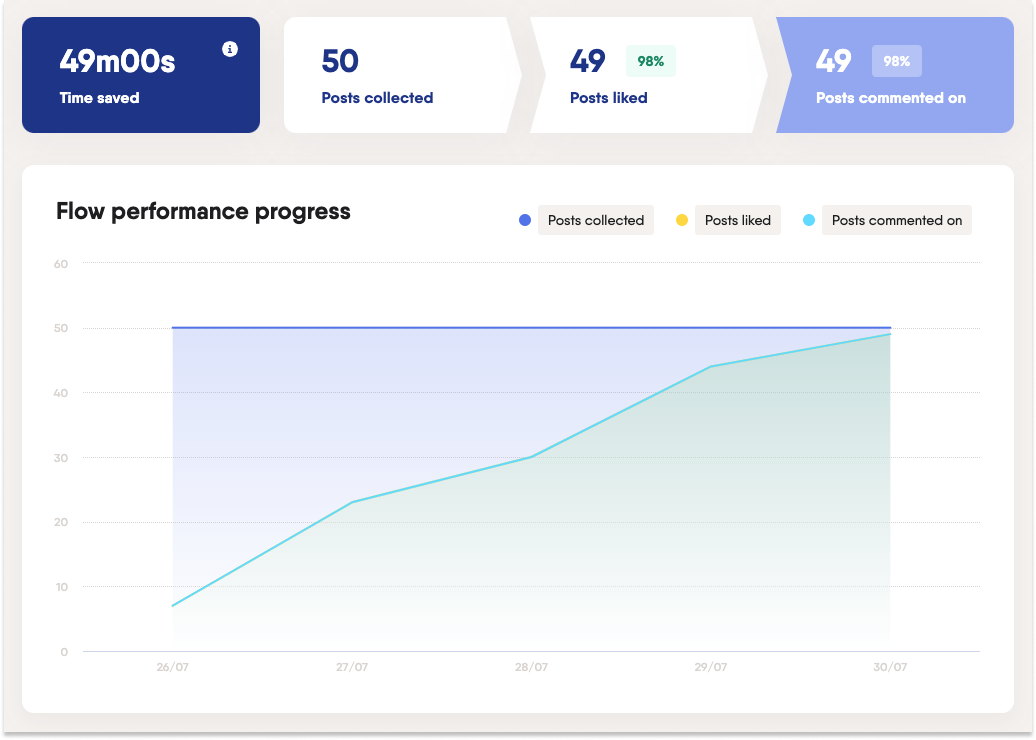
There are over 100 different tools from PhantomBuster that can bring you closer to your target audience. Visit the Phantom Store to see the full list.
In the last section, we’ll wrap up this ebook with a few final words of encouragement, before sending you on your way to build connections with your ideal customer profiles.
Conclusion
That’s all for now! From templates to formulas for finding your top customers, it’s been a whirlwind tour from start to finish.
Hopefully, you now feel more comfortable with the idea of creating your own ICP, and you’re well-equipped with automated lead generation tools from PhantomBuster to connect with them right away.
Remember that it will take a little “trial and error” to define your exact ICP. But with these formulas, metrics and templates, you’re right on track to finding your dream customers—and building a rapport with them on autopilot.
